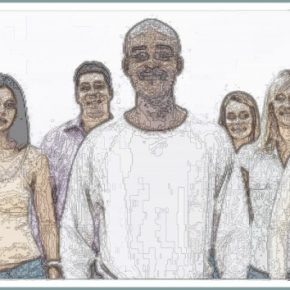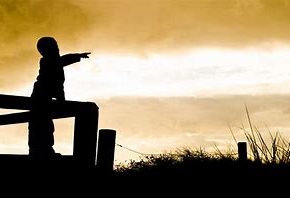Welcome to July’s issue of Synchronized Chaos Magazine. This month’s theme is Ways of Being Human. We’re exploring different ideas of how to be a person in our world.
First, there’s the basic question of why many of us choose to stick around and try to make the most of this life.
Inspiration and motivation
Where do we find our inspiration, and what can that motivate us to accomplish? Different contributors point to different personal and global sources of inspiration.
Christopher Bernard exults in spring, dancing along with Schumann in an exuberant symphony of nature’s regrowth.
Mahbub pays tribute to his poetry’s various ‘muses’: nature, romantic love, artwork, and his own thoughts and ideas. Bursts of rainfall, paintings, and lost or idealized love can all come through and blossom into poems.
Joan Beebe writes of love and nurturing, from metaphorical beams of light illuminating the world and from the hardworking hands of a caring mother figure.
Even J.J. Campbell, our regular poet of angst, emptiness and alienation, allows glimpses of hope and beauty to penetrate his pieces this month, through rays of sunlight and stained glass.
Once we get motivated, we can move forward in life in various ways.
Chimezie Ihekuna’s play The Success Story presents a college student who leaves his promising engineering career to follow his true passion and become an author.
Elizabeth Hughes, in her monthly Book Periscope column, reviews titles about protagonists who take great personal risks to resist injustice. Arthur Cantrell’s The Flight of the Valkyrie concerns black operations and military intelligence efforts against the Nazis, and Frederick Malphurs’ A Day in the Life of Dr. Fox presents a Mexican surgeon and his twin brother and their fight for justice against drug lords who killed their sister.
Margi Garcia’s poetry shares her journey out of a violent relationship and her efforts to rebuild her life, as she finds comfort in family and friends, especially her children, for whom she desires to build a better life.
Small individuals, big world – or vice versa?
How do we relate to the world around us, to a universe that’s not at human scale? How can we, how have we, made sense of where we fit in a world that’s both much larger and much smaller than ourselves?
Gary Glauber portrays very human characters: guardian angels who love earthly pleasures such as Jeopardy, people who lose love out of foolish pride, old friends who enjoy reconnecting, exuberant vacationers. He contrasts the warmth of a personal conversation in a coffeeshop with the loss of privacy and feeling of being trapped and stared at that he feels when people he knows get approached or propositioned by strangers in the vast confusing world of the Internet.
My review of San Francisco State University’s annual Personalized Medicine conference presents a more optimistic view of computer technology. Ironically, impersonal processing of patients’ medical data and analysis of lab results through artificial intelligence allows us the processing power to understand health on a more individual basis and identify patterns on a deep enough level to provide personalized care based on a person’s genetics.
Doug Hawley writes of a hypothetical future terrorist attack in a story that starts out sounding so over the top that it could be humorous, then turns dark as the attack gets carried out and vast numbers of people die. His piece shows at once the vulnerability of the powerful, the ubiquity of nameless evil, the difficulty of fighting an enemy we can’t even identify, and what happens when large segments of the world are left feeling powerless.
In a more humorous vein, Jeff Bagato gives us a character who’s quite large. His body, his belongings, his self-concept – everything about him is defiantly big. This serves as a commentary on some cultures’ relentless drive to expand and grow, on the idea that ‘bigger is better.’
Storytelling and light humor
We explain our world to each other, and to ourselves, through stories. We also use storytelling to entertain ourselves and to appreciate and remember the world around us. Several pieces here illustrate how this narration is a vital part of the human experience.
Norman Olson gives us a travel essay with observations and detailed running commentary on his recent trip to the Netherlands.
J.D. DeHart sends us a fresh set of words and thoughts. Several pieces probe the creative and writing process itself, drawing upon the human imagination and finding amusement in the written word.
Ryan Quinn Flanagan contributes poetry somewhat reminiscent of DeHart’s, although with an even stronger narrative component. His work incorporates vignettes that find humor through the unexpected, the strange, and the slightly grotesque: drunk neighbors who talk of caterpillars, heartbroken friends not even ready to let houseplants into their lives, people who approach pro basketball in a cultish way.
The unusual, and the awkward, is a part of our human experience, though – just as much as the beautiful, the delightful, and the inspirational. We hope that as you read this issue, you enjoy these commentaries on our human existence.


